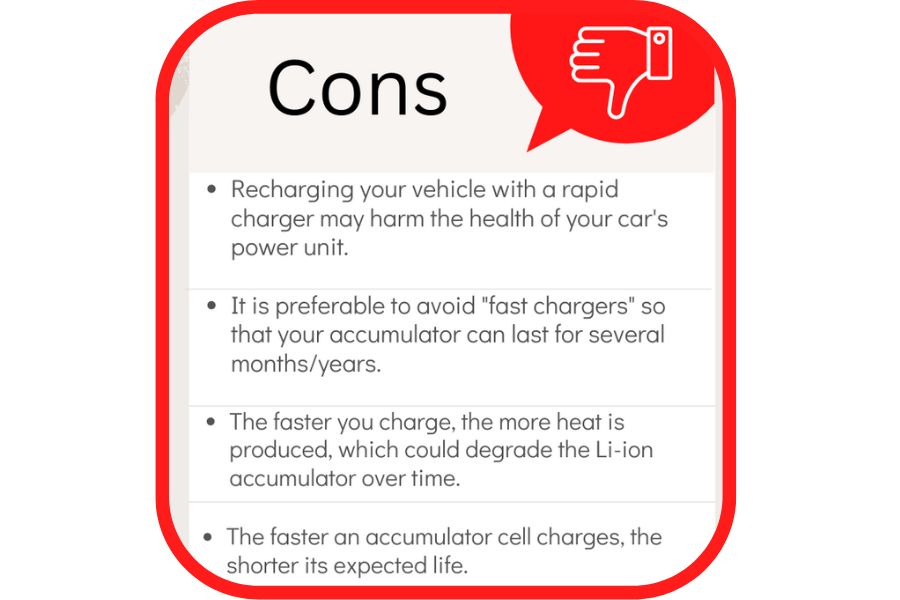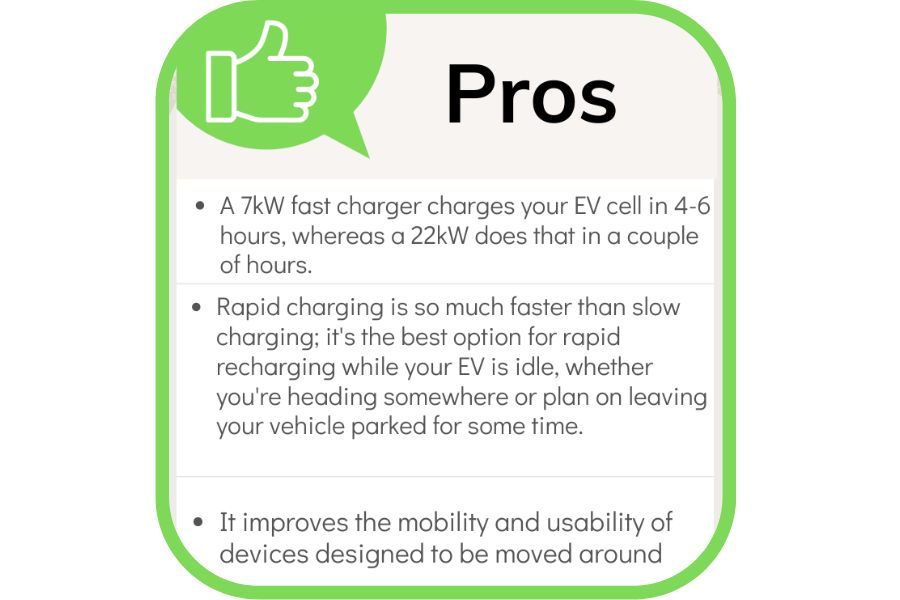One big question has always been on consumers’ minds everywhere: charging. Yes, they are concerned about the car’s range, which is closely related to how the vehicle operates, Slow Charging Vs Fast Charging ?
Generally, slow charging is preferable to a superfast connection for any device (supercharge). Rapid charging warms the circuit so much that it shortens its life.
Heat and maximum charging are the two most important factors influencing the battery’s life. Faster connection generates more heat in general;
However, Tesla has considered this and implemented computer control and a coolant system for such an accumulator to handle the increased heat from faster charging.
It becomes warmer if you do supercharge instead of trickle charge. However, the cooling system controls the issue.
More importantly, how frequently do you charge to maximum capacity? The daily recommended charge maximum is set at 80%: the more frequently you maximize the battery’s pack to 100%, the more likely irreversible changes will occur.
While the possibility is small, Slow charging may lose a few percent of the battery’s capacity over hundreds of charges. Other than the heat, which increases the possibility of an off reaction, this is much less dependent on the charged rate.
Slow charging can extend the battery’s cycle life to more than 3000 times, whereas fast charging reduces the cycle life to around 1,000 times or less.
Slow Charging Vs Fast Charging

Slow Charging Pros & Cons


Fast charging Pros & Cons


Guide : Slow Charging Vs Fast Charging
As an EV owner, you have several useful recharging options to suit your lifestyle and driving requirements. You can charge your Tesla anywhere, whether at home or on the road if there is an outlet.
One simple way is to estimate how long it will take your EV to reach maximum charging. Look at the rated power of the charger you’re using.
A 3kW charger will provide a slowed charge, taking 10-14 hours on average. Meanwhile, a 7kW – 22kW charger will give your EV a “rapid” charge, usually in 4 to 6 hours.
Fast recharging eventually damages electric car batteries and could even reduce their lifespan. Electric vehicles use a different type of energy: rechargeable batteries.
These are similar to those found in mobile phones and laptops, but EV batteries are significantly larger and more complex.
However, the principle remains the same: rechargeable batteries start losing their capacity to keep charge over time.
Fast connection with batteries is efficient and easy. Still, it puts a lot of strain on the accumulator because it charges it at a high rate—which can lead to overheating of the EV battery, which is another problem that impacts the battery’s health.
Occasional use is fine, but frequent use can strain the accumulator and reduce its capacity to keep a charge.
As a result, the slowed charger is the preferred and most independent method of recharging the EV battery, particularly for NMC batteries. It is also the most cost-effective recharging the EV cell because the EV owner only needs to pay for the energy.
Slow charging takes 10 to 14 hours to charge a 2W or 3W battery fully. Slowed charging, according to EV manufacturers, is beneficial to battery life.
Use the Go Anywhere tool to plan for future road trips before you even get in your car. Choose your vehicle’s configuration and enter your start and end points.
The Go Anywhere tool will provide the quickest route, complete with Supercharger stops and suggested charge times.
Conclusion
A battery’s “health life” is heavily influenced by heat and the physical stresses it places on the battery pack as an energized chemical compartment. In other words, most of what we can do as users is control the amount of heat of an accumulator.
Fast-recharging technology nowadays is simply brief bursts of high voltage; they are brief to avoid bad power spikes, which build up heat. Usually, the longer you fast-charge (generally), the more heat accumulates.
As a result, numerous recharging factors can impact the battery’s life, most of which are heat-related. You’ll need to figure out the local variables, but in general, treat your cell gently (less heat, less superheating), and it’ll last a long time.
Other factors influence battery-pack durability, but the recharging rate is something you can easily control.